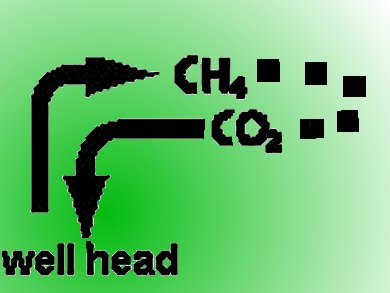Hydraulically fractured shale formations could become repositories for permanent geologic carbon sequestration. Zhiyuan Tao and Andres Clarens, University of Virginia, Charlottesville, USA, propose a computational method for estimating the CO2 sequestration capacity of a fractured shale formation. Their method is applied to the Marcellus shale, a 600-mile-long formation in Pennsylvania, USA, and based on historical and projected CH4 production along with published data and models for CH4/CO2 sorption equilibria and kinetics.
The network of cracks produced by the fracking process could be filled up with CO2 before the depleted wells are sealed. This would not require building any new infrastructure to sequester CO2. Shales have a low permeability, but they can adsorb an appreciable amount of CO2 on fracture surfaces. The mass transfer kinetic results indicate that injection of CO2 would proceed several times faster than production of CH4.
According to the researchers, the Marcellus shale alone could store between 10.4 and 18.4 Gt of CO2 between now and 2030. This represents more than 50 % of total CO2 emissions of the USA from stationary sources over the same period. Other shale formations with comparable pressure/temperature conditions, such as Haynesville (underlies large parts of southwestern Arkansas, northwest Louisiana, and East Texas) and Barnett (Bend Arch-Fort Worth Basin, Texas), could provide additional storage capacity.
- Estimating the Carbon Sequestration Capacity of Shale Formations Using Methane Production Rates,
Zhiyuan Tao, Andres Clarens,
Environm. Sci. Technol. 2013.
DOI: 10.1021/es401221j




